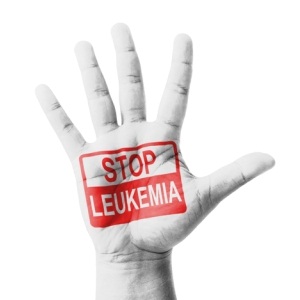
Ninety percent of people facing death because conventional treatments had failed to destroy their leukaemia have responded to an experimental therapy that trains their cells to kill out-of-control blood cells, doctors in Philadelphia report.
Astonished at results
Twenty seven of the 25 children and 5 adults initially responded to the new therapy. Nineteen – including a 9-year-old treated two and a half years ago – have remained cancer-free and 15 of those 19 have not receive any subsequent therapy.
"We're astonished how well it turned out," senior author Dr. Stephan Grupp of Children's Hospital of Philadelphia told Reuters Health. Doctors are often happy if a treatment can improve the remission rate by 3 percent to 5 percent. "In our wildest dreams, we didn't think it would work as well as it did for the patients we've treated so far," Grupp said.
"It's equally impressive in both the adult and paediatric population," said Dr. Noelle Frey of the University of Pennsylvania, who directed the adult portion of the study.
Read: Leukaemia: your questions answered
"These are patients where the chances of cure are close to zero, if not zero," she said. "This is a therapy that not only gives hope, but is also correlated with tremendous success."
The treatment results, reported in the New England Journal of Medicine, are part of a broader effort to reprogramme the cells of cancer patients so they reproduce rapidly and attack the rogue cells responsible for tumours.
A game changer
"If this has curative potential – which we don't know yet, but seems to be the case – it's a game changer," said Dr. Michael Sadelain of Memorial Sloan Kettering Cancer Centre, part of a separate team that previously used the technique to produce complete remissions in 14 out of 16 adults who had acute lymphoblastic leukemia (ALL) of a stage "where nobody would go into complete remission".
"The good news is, this therapy can work just as well in children as it was reported to do in adults," he told Reuters Health.
In the Philadelphia study, other treatments – as many as four – had failed in the 30 patients. Conventional therapy typically cures 80 percent to 85 percent of children with ALL and those children "don't need this," said Grupp. "The other 15 percent or so are candidates for this."
Adults with ALL are tougher to treat, "so 50 percent or more might need this," he said.
In July, the the U.S. Food and Drug Administration gave the treatment, known as CTL019, a breakthrough therapy designation designed to expedite its development for ALL.
Training T-cells
The Philadelphia researchers have also been experimenting with CTL019 for chronic lymphocytic leukaemia and Hodgkin's lymphoma,. The remission rates in those tests have been high, but not nearly as high as with ALL, Frey told Reuters Health. Those findings have not been published.
Read: T-cell lymphocyte
The ALL treatment involves training disease-fighting blood cells known as T-cells. Once removed from a patient's body, they are programmed to hunt cancer cells that have a telltale protein on their surface. The specially-trained cells are then re-injected into the patient. The re-engineering process currently costs about $25,000.
Of the initial 30 patients, 27 were in complete remission by the one-month mark, but seven relapsed over a period ranging from 6 weeks to 8.5 months after treatment. Twenty three were alive at the six-month mark. Five of the 23 left the study to receive other treatments, including stem cell transplantation.
The treatment is not without serious risks. The most common is cytokine release syndrome, where the body appears to react to the mass killing of tumour cells.
Patients "become tired, achy and nauseous," said Frey. "You can also get low blood pressure and breathing difficulties. Unfortunately, it can be life-threatening. But we have, in most cases, been able to reverse it. Yet in most situations it's very manageable."
Multicentre study
"For our patients who have already relapsed after stem cell transplants, or don't have any options for donors," she said, "this option has provided new hope."
In eight of the 27 cases where there was a response, cytokine release syndrome was judged to be severe and the patients ended up in intensive care.
At least part of the technique involved in the Philadelphia study has been licensed to Novartis. Sloan Kettering has teamed up with a start-up company, Juno Therapeutics, which will conduct a multicentre study of adults with ALL, Sadelain said.
"That's a sea change in the field because, until now, this realm of cell therapy was almost exclusively in the hands of academic centres," he said. "Now you see a whole host of companies moving into this space. Investors have been impressed by these results and will take them far beyond what academic centres will do."
SOURCE: http://bit.ly/1syxUeI New England Journal of Medicine, October 15, 2014.
Read more:
Leukaemia: A Reason to Hope
10 leukaemia facts
Radio towers linked to leukaemia
Image: Stop leukaemia from Shutterstock




 Publications
Publications
 Partners
Partners










